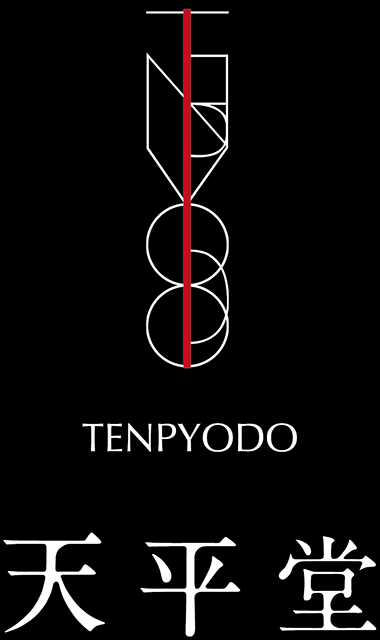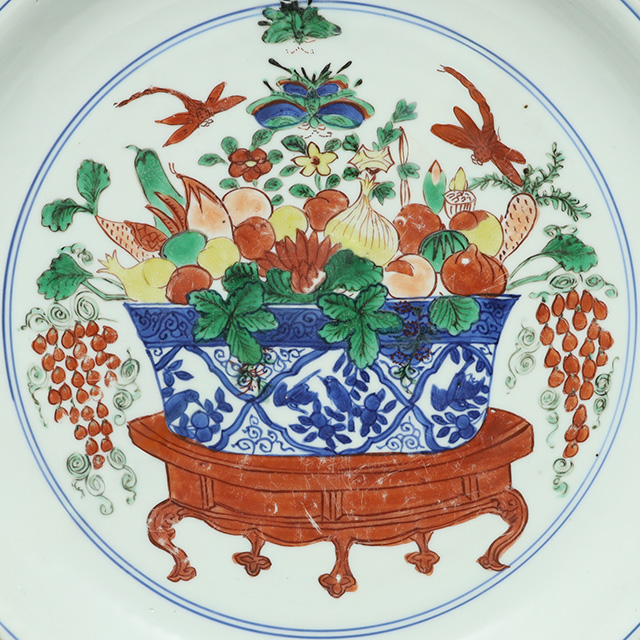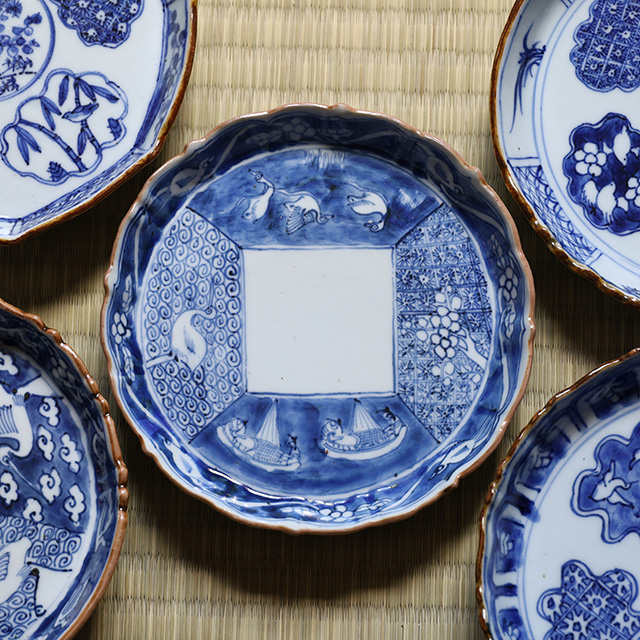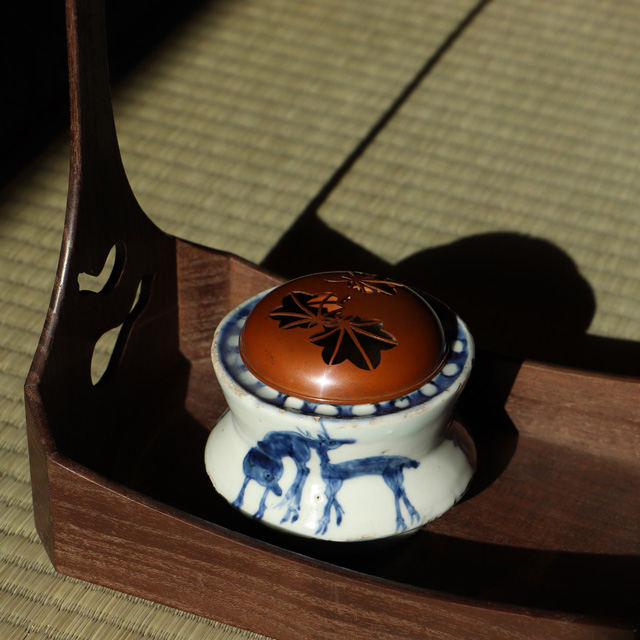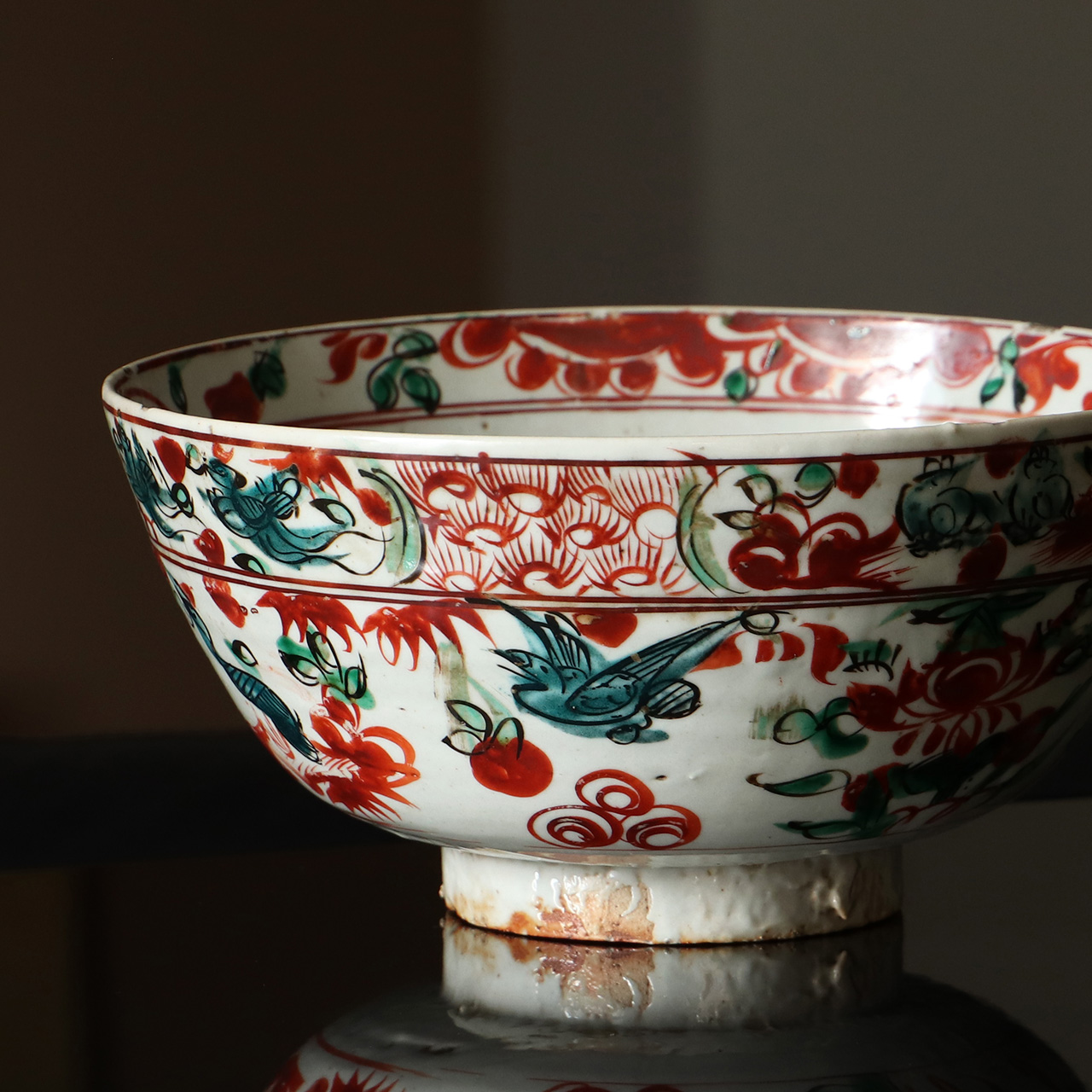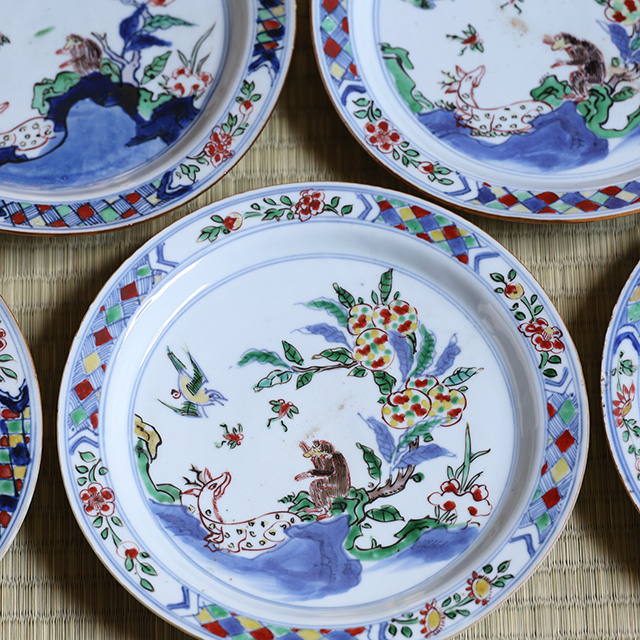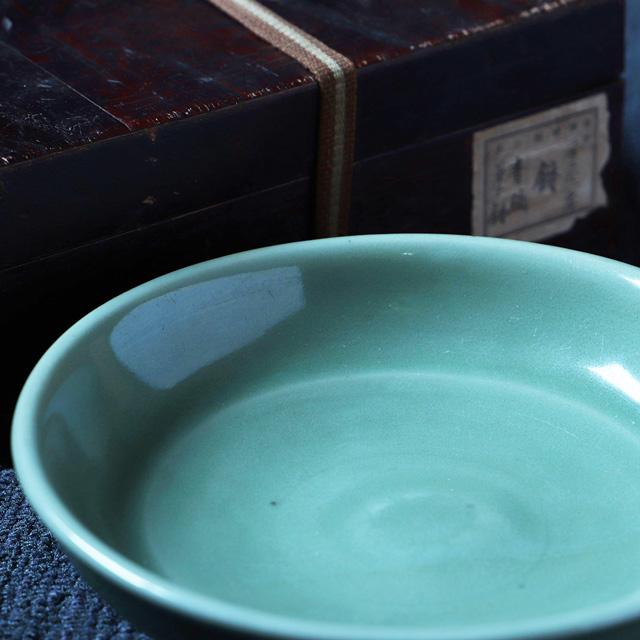Chinese Antique(Ming・Qing Dynasty)
中国古美術(明・清時代)


Chinese Antique(Ming・Qing Dynasty)
https://tenpyodo.com/en/product1/cat/chinease-en/(Fine Arts ⇒ Chinese Antique)
Tenryu-ji Celadon
Tenryu-ji celadon is celadon that was fired in the longquan kiln between the end yuan dynasty and the early ming dynasty. The name comes from the fact that a large amount of this kind of celadon was shipped on the trade ship “Tenryu-ji Ship” under the guise of building tenryu-ji during the period of the northern and southern courts. There is also a theory that the name comes from the ukibotande incense burner that Muso Soseki brought to tenryu-ji temple. The celadon produced by longquan kiln also grew in size during the yuan dynasty, and is characterized by a thick devitrifying greenish glaze. Kinuta celadon was based on a plain design, but tenryu-ji celadon was mass produced in response to the general trend of demanding decoration. “Tobi Celadon”, in which iron spots are scattered on the glaze surface, is also a decoration method that characterizes tenryu-ji celadon.
Shichikan Celadon
Shichikan celadon refers to a type of celadon ware fired at the Longquan kilns from the mid-Ming to early Qing dynasty. The name is traditionally believed to derive from Chinese officials of the seventh rank (shichikan) who are said to have introduced these wares to Japan. Favored by literati, Shichikan Celadon is characterized by small-scale vessels such as incense burners, incense containers, flower vases, and scholarly desk objects. Its glaze—an elegant greenish-blue with remarkable clarity and gloss—recalls the luminous depth of bidoro (vidro) glass. In contrast to Kinuta and Tenryūji celadon, which tend to show minimal surface crackle, Shichikan celadon often exhibit bold and expressive crazing (fine crackle patterns in the glaze), lending a rich visual texture that quietly animates the surface. Within its tranquil presence lies a subtle yet vivid expression of poetic beauty.
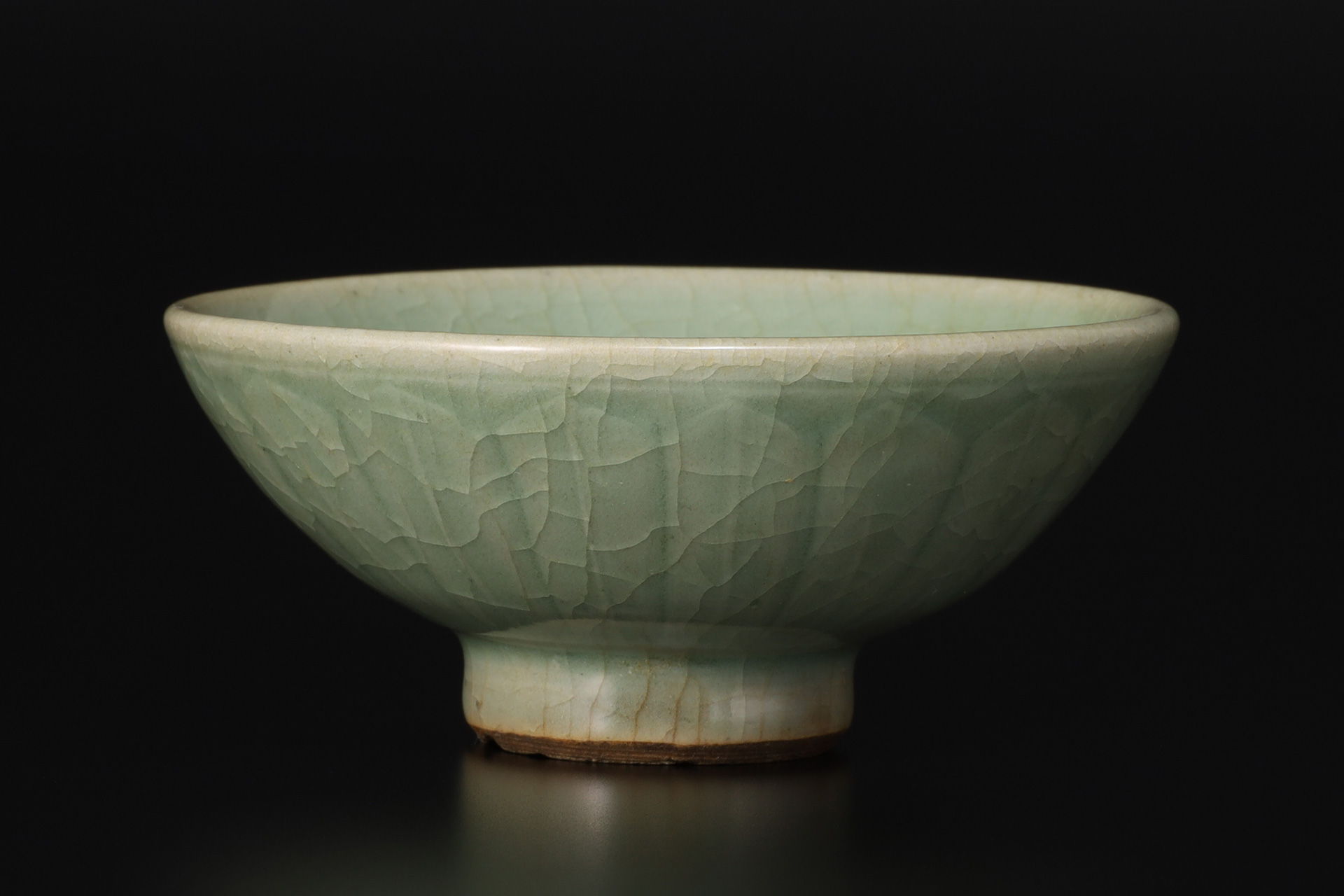
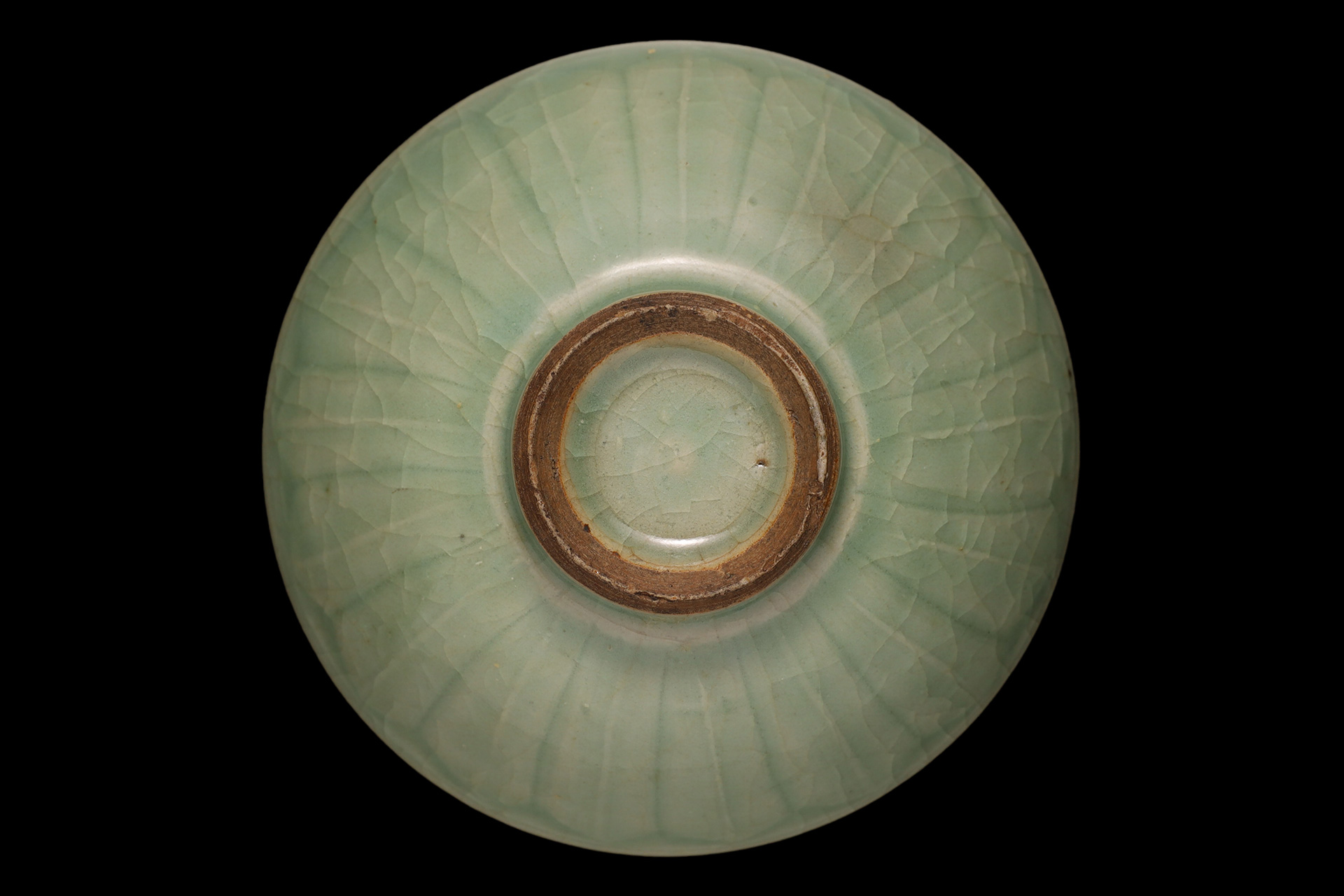
Ko-Akae
Ko-Akae refers to polychrome porcelain produced mainly during the Zhengde (1506–21) and Jiajing (1522–66) reigns of the Ming dynasty, fired in the Jingdezhen kilns. The body presents a bright, milky-white tone, upon which a rich and vivid red serves as the principal color, complemented by green, yellow, and occasionally blue. In principle, underglaze blue (sometsuke) was not employed. Although lacking the refinement of Jingdezhen imperial kilns, these pieces embody a free-spirited and generous charm. The predominant vessel types include dishes, bowls, basins, and covered boxes, while jars and vases are comparatively rare. Decorative motifs feature arabesques of flowers, waterfowl in lotus ponds, fish and aquatic plants, peacocks with peonies, dragons, phoenixes, and human figures. Production was not limited to domestic use; wares were widely exported to Japan, Southeast Asia, and the Middle East. Inscriptions such as “Made by Chen Wenxian,” “Made by Chen Shougui,” “Made by Chen Shouliu,” and “Made by He Wenbai” are known, and are thought to indicate the names of potters or workshop masters.
万暦赤絵
万暦赤絵とは明時代後期の万暦年間(1573~1620)に景徳鎮官窯で焼成された五彩です。
嘉靖年間(1522~66)から万暦年間は五彩の全盛期であり、
華やかさを求めた作風は荘厳美麗を極めるかのように各々の色彩が共鳴し、
龍鳳、花鳥、魚藻、人物故事、八宝、吉祥、花籠文等が器面を覆い尽くしています。
嘉靖年間や隆慶年間(1567~72)で同様の特徴を持つ五彩も「万暦赤絵」と総括されてきました。
その濃艶な赤絵は高く評価され、
伊万里焼の上絵付けに大きな影響を及ぼした他、
茶の湯を嗜む政財界人も茶器や水指を好んで所有しました。
志賀直哉は小説『万暦赤絵』を書き、
梅原龍三郎は「万暦赤絵」の花瓶をモチーフとして繰り返し描いた事で知られます。

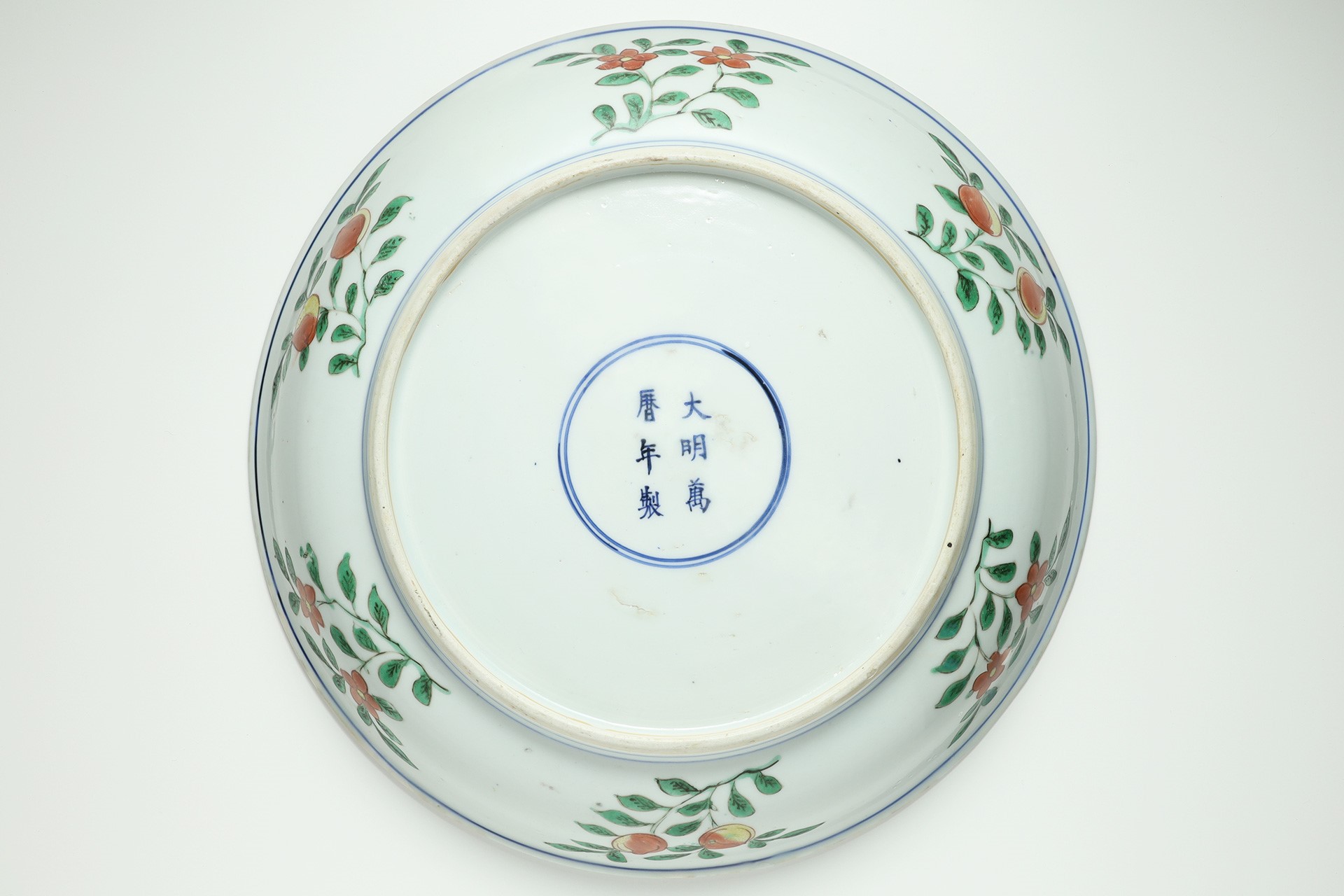
Ko-Sometsuke
Ko-Sometsuke refers to a distinctive group of blue-and-white porcelain fired at the Jingdezhen kilns during the late Ming dynasty, particularly in the Tianqi era (1621–27). A distinct group of blue-and-white porcelains, known as Ko-Sometsuke, is cherished as a category of its own, characterized by unique stylistic features. In contrast to the Qing dynasty Shin-watari (New Imports), these works belong to the older tradition of Ko-watari (Old Imports), and many surviving examples were transmitted to Japan. Following the death of the Wanli Emperor, the Jingdezhen imperial kilns were shut down, and Jingdezhen private kilns assumed control over both production and distribution. Many potters who had once served in the imperial kilns moved to private kilns to sustain their livelihoods, leaving behind works that still reflect the refinement of official ware. A significant portion of these works are classified as Ko-Sometsuke and Shonzui. Ko-Sometsuke is broadly divided into two categories: tea pottery commissioned by Japanese tea masters, and everyday utensils for general use. As tea pottery, Ko-Sometsuke works were crafted in imitation of the thick-bodied forms favored by Japanese tastes, characterized by substantial walls and a bold, vigorous presence. In the late Ming dynasty, Japanese tea masters actively commissioned the production of novel tea utensils, seeking works that reflected their individual aesthetic sensibilities. Many Ko-Sometsuke works exhibit a phenomenon in which the glaze flakes away due to differences in shrinkage between the base and the glaze, exposing the underlying base. This effect, resembling insect bites, is poetically referred to as “Mushikui”. This phenomenon is most commonly observed along the rim and at the corner, where the glaze tends to be applied more thinly. Though typically regarded as a flaw in conventional ceramics, tea masters discerned in it a natural elegance, appreciating its rustic simplicity as a form of aesthetic expression.
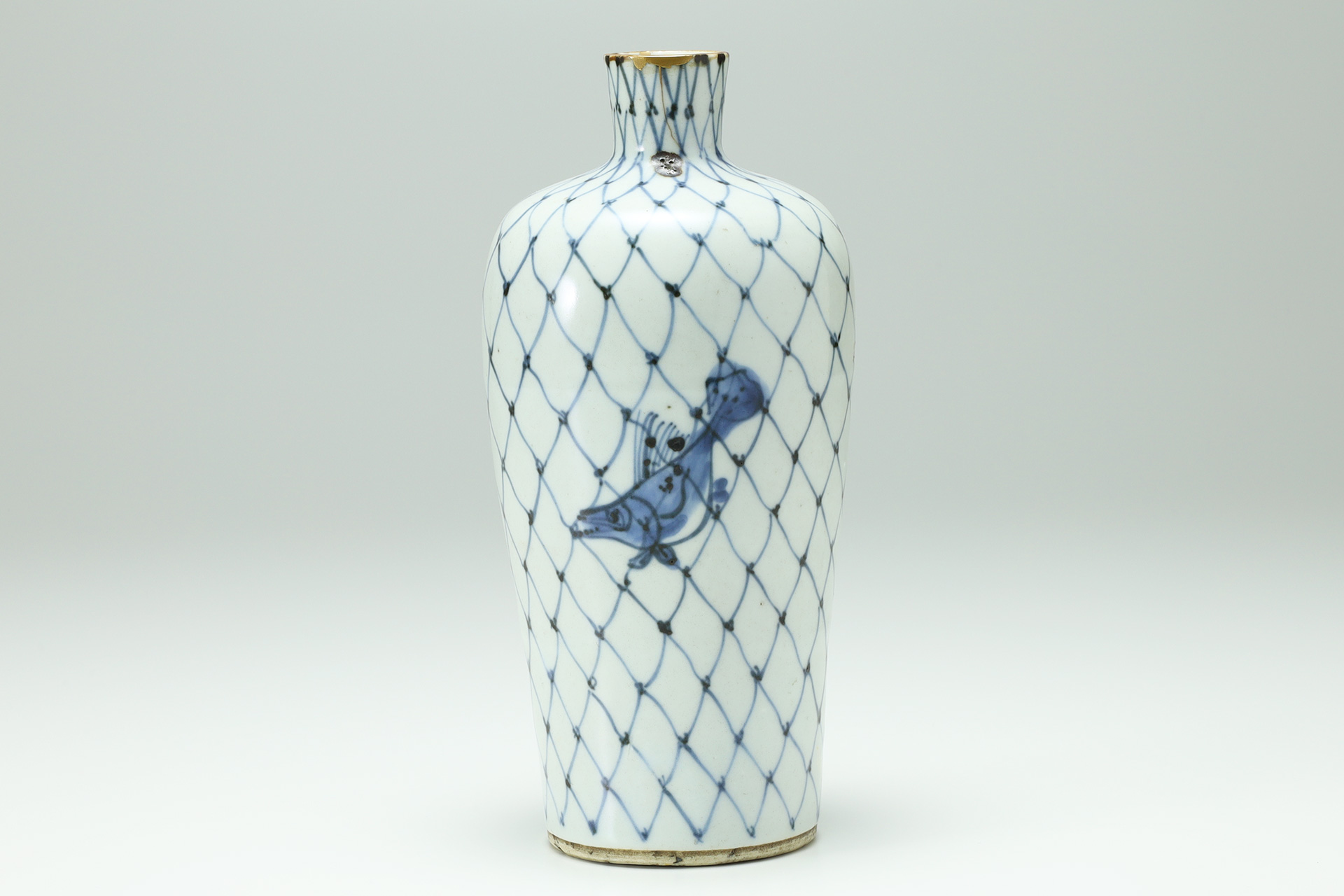
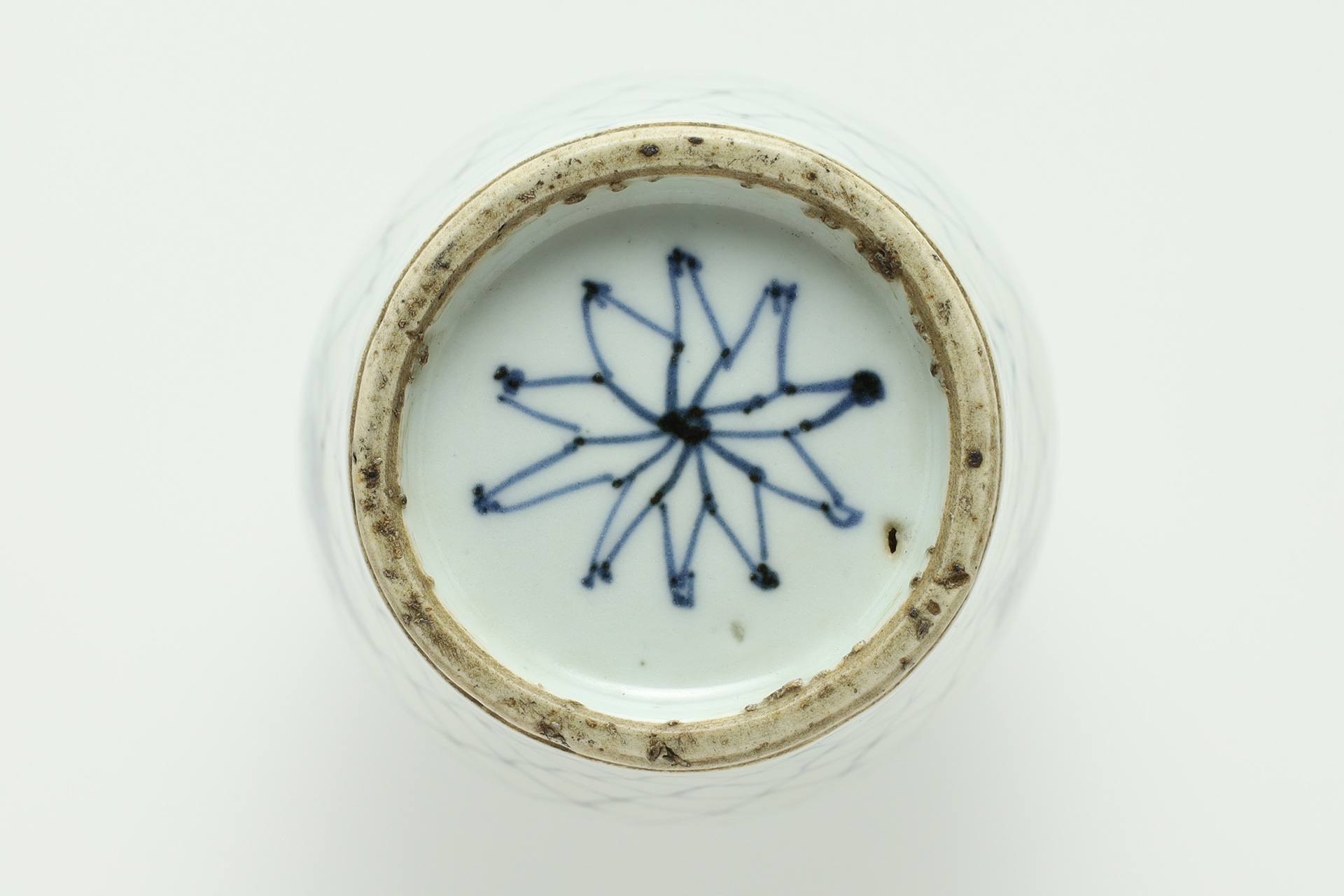
Tenkei-Akae
Tenkei-akae refers to the overglaze enamels porcelain that were fired at the jingdezhen kiln in china, mainly during the late ming dynasty’s tianqi era(1621-27). Colors such as red, green, yellow, and black are added to match the blue and white of the base, and the work is characterized by a free spirited style that is stylish and tasteful. During this era, with the fall of the Wanli Emperor, the jingdezhen imperial kiln was closed down, and the civilian kiln took the lead in production and sales. Potters who worked at the jingdezhen imperial kiln moved to the civilian kiln to make a living, leaving behind masterpieces that are reminiscent of the jingdezhen imperial kiln. Most of them belong to the tenkei-akae, kosometsuke, and shonzui. Many tenkei-akae works have glaze peeling off due to differences in the shrinkage rates of the clay and glaze, exposing the inner clay. This phenomenon, which resembles the appearance of being eaten by worms, is called “Mushikui(worm eaten)”. One characteristic is that mushikui(some holes)can often be found in areas where the glaze is thinly applied, such as the rim or angular parts. While this might be considered a flaw in ordinary porcelains, master of tea ceremony found elegance in this natural phenomenon and appreciated the rough taste, valuing it as an aesthetic effect.

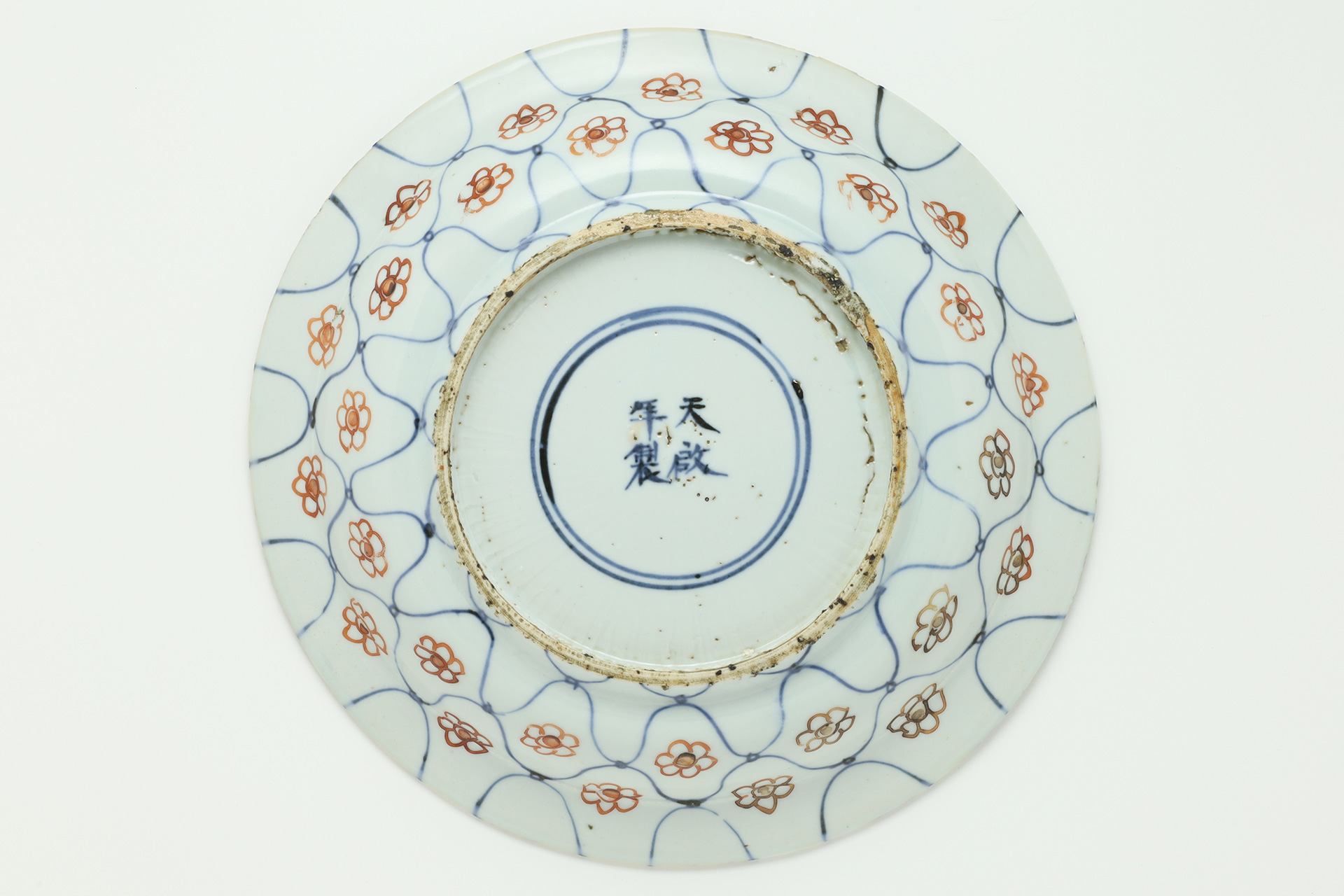
Shonzui
Shonzui refers to the top-quality porcelain that was fired at the Jingdezhen kilns in China, during the late Ming dynasty’s Chongzhen era (1628-44). The name comes from the fact that there is a blue-and-white (sometsuke) inscription on part of the vessel that reads “Gorodayu Goshonzui-Made” which is interpreted as meaning “Made by the eldest son of the fifth son of the Go family”. There is a theory that Kobori Enshu was involved, and the buyers included tea masters, samurai, Zen temples, and wealthy merchants. It is made from high-quality white porcelain and is thick and heavy when you hold it. It is characterized by deep crystal-clear glaze, and the focus is on filling every corner of the surface of the vessel with auspicious and geometric designs. Some of the vessel shapes are modeled on Momoyama tea pottery, and known works include tea utensils such as water container, tea bowl, chaire, incense container, tea towel container, and shaking container (furidashi), as well as luxury tableware such as sake bottle, bowl, mukozuke, dish, and sake cup. Adding Shonzui to a formal tea gathering arrangement creates a sense of cleanliness and harmonizes with the unglazed pottery and colored ware.
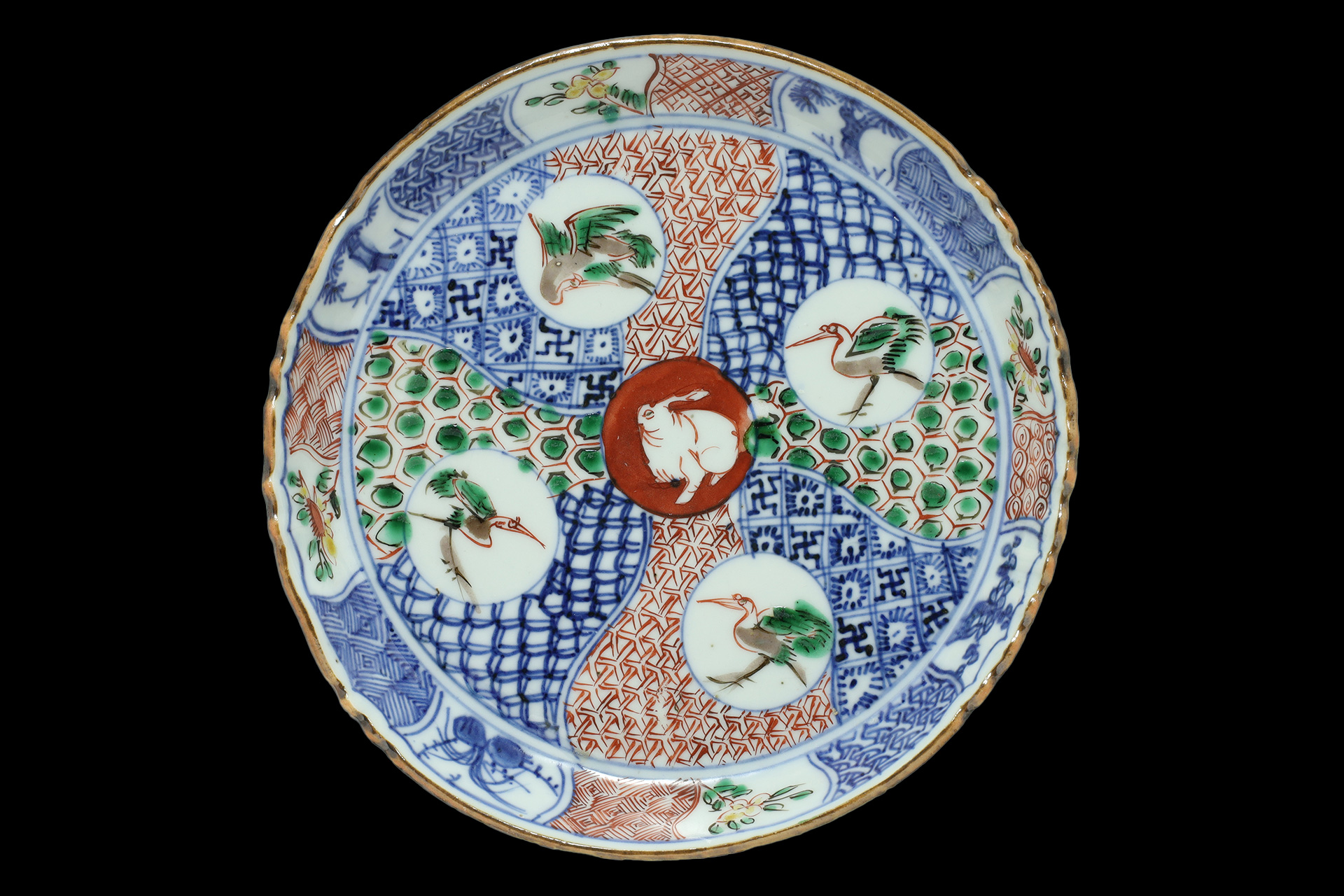
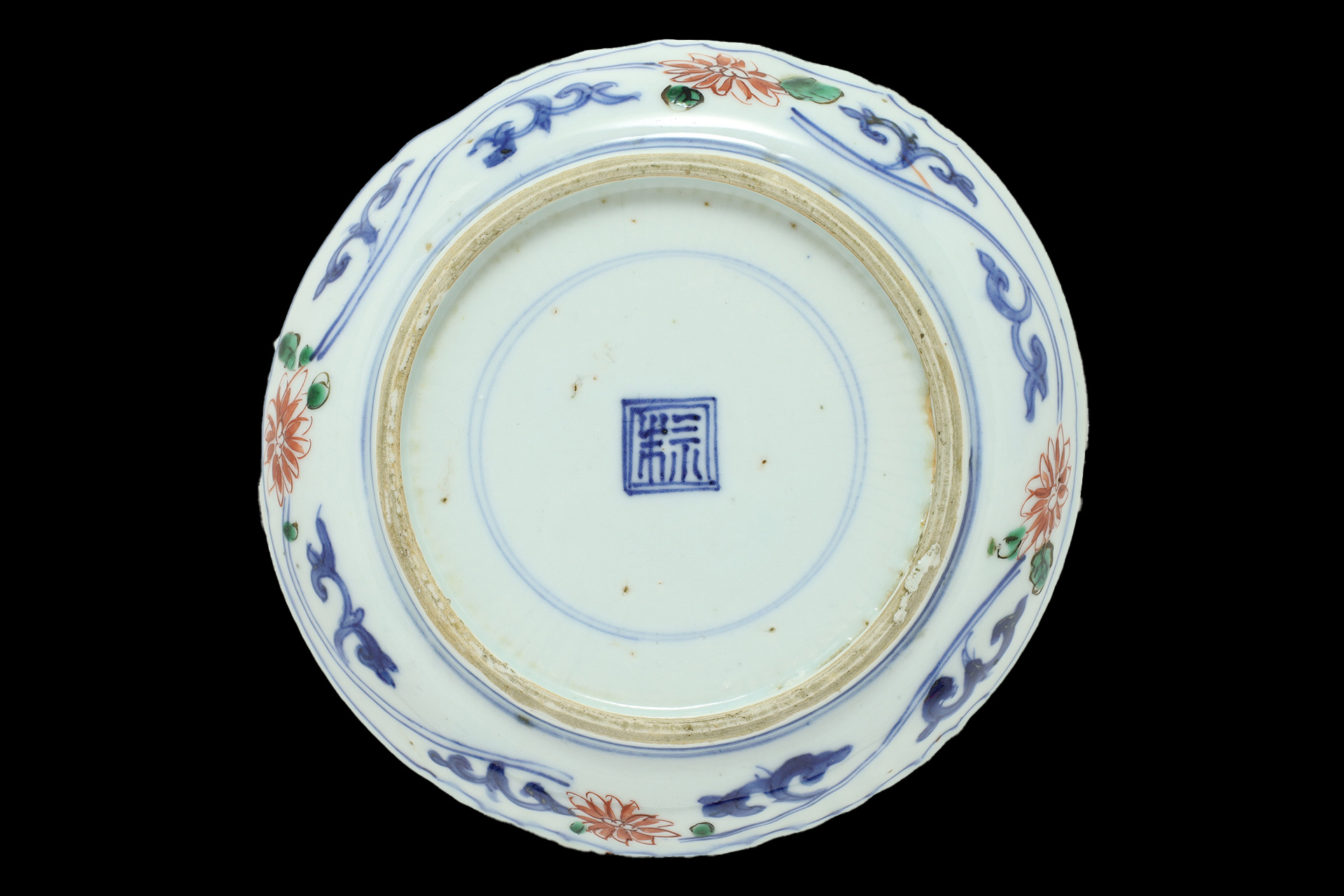
Nanking Aka-e
Nanking Aka-e refers to five-color porcelain wares fired at the Jingdezhen kiln during the late Ming to early Qing dynasties. In a narrower sense, it tends to be distinguished from Tianqi Aka-e and Iroe Shonzui, and is regarded as a distinct stylistic tradition. The name originates from the fact that Nanking was the capital of the Ming dynasty, and has come to serve as a broad, somewhat ambiguous term for color-enamel (wucai) porcelain imported from China. These works are typically coated with a translucent milky-white glaze and decorated exclusively with overglaze enamels, with minimal use of underglaze blue. Pieces produced for Europe were primarily large-scale works – jars, dishes, ewers, vases, flasks, and lidded vessels – while those made for Japan consisted mainly of tableware and tea utensils.
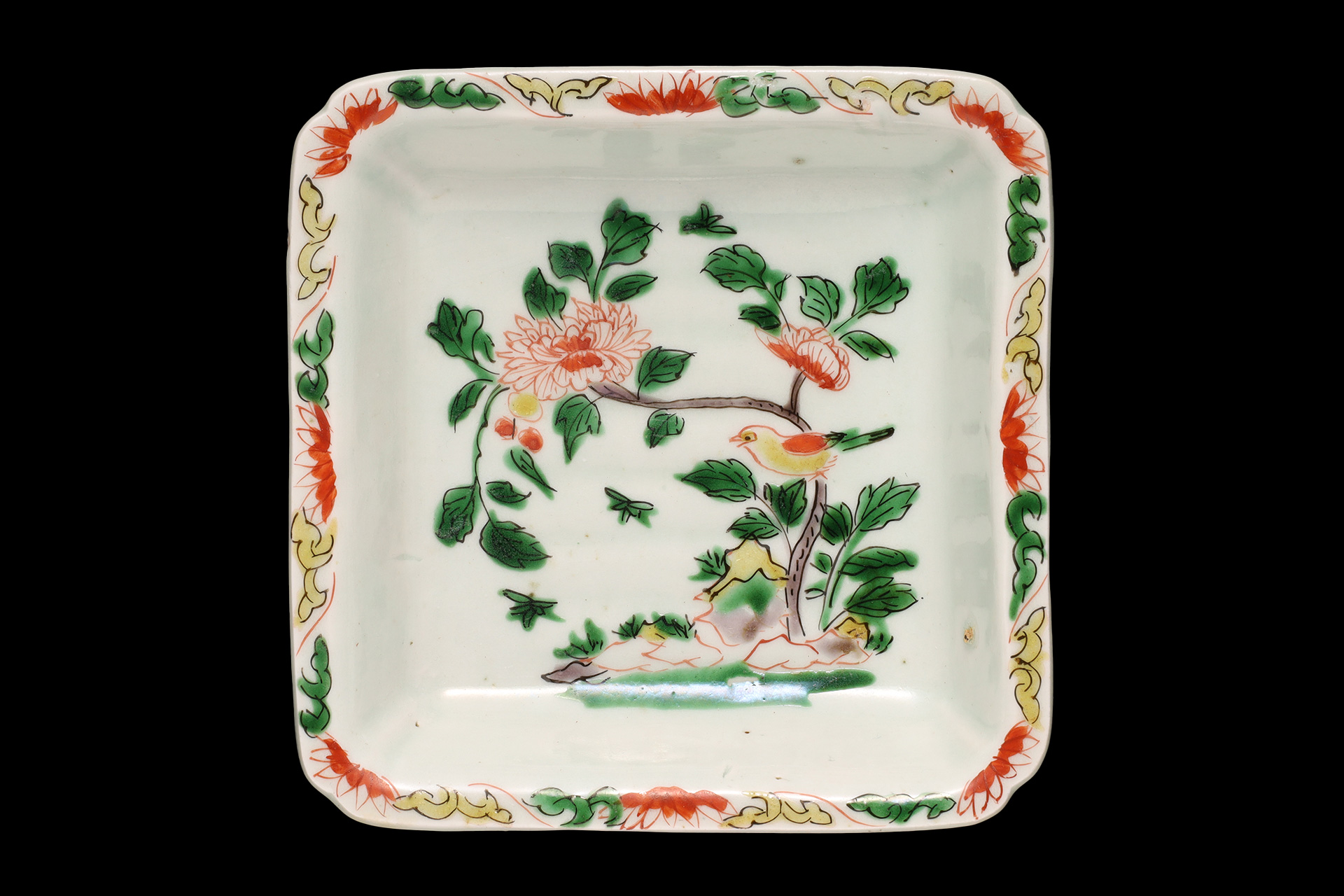
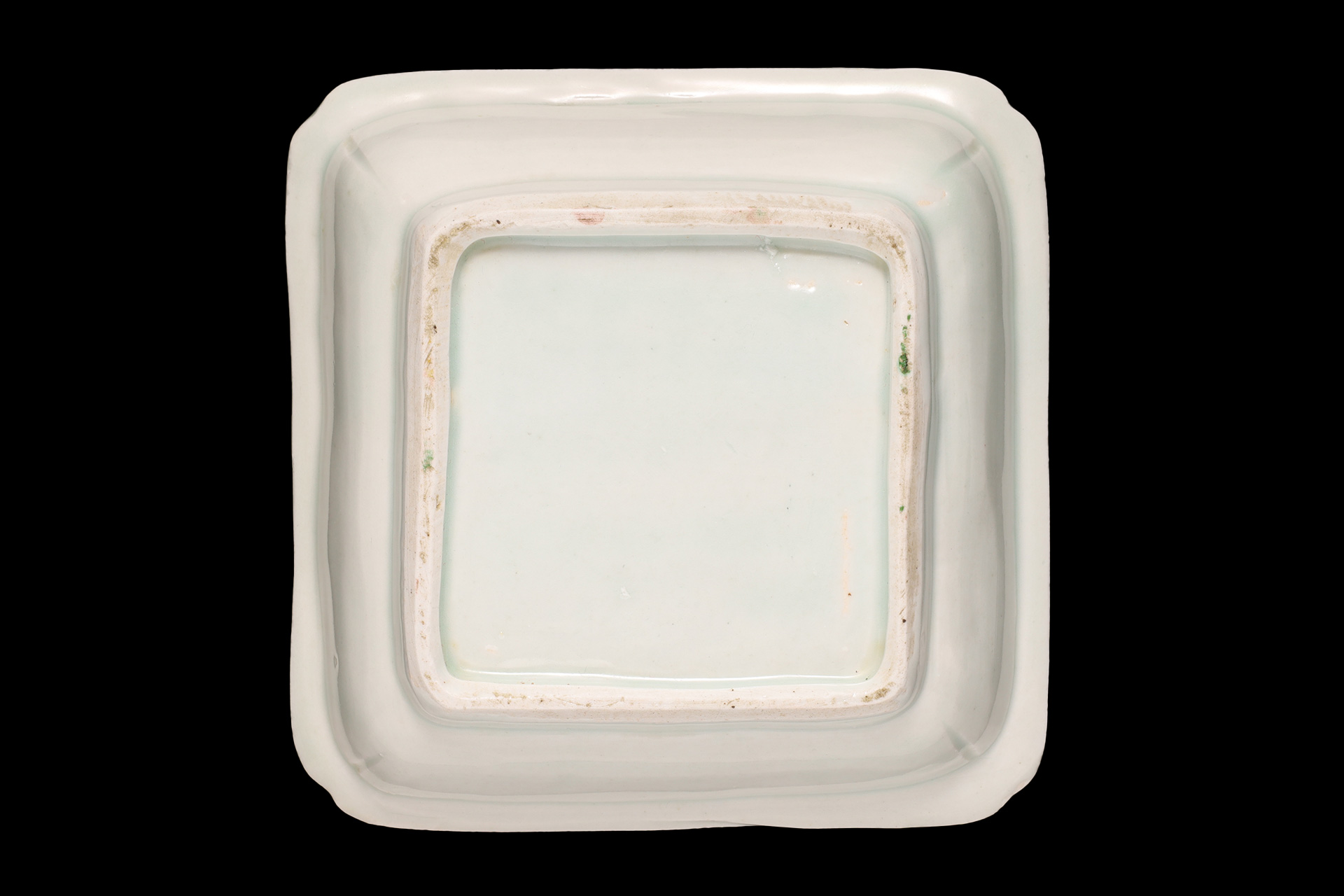
Gosu Aka-e
Gosu Aka-e refers to overglaze enamels porcelain produced primarily during the late Ming dynasty at the Zhangzhou kilns in southern Fujian. Its style inherits the lineage of Ko-Aka-e and Kinrande made at the Jingdezhen kilns, while at the same time developing along an independent trajectory. Underglaze blue decoration is generally not used as a foundation; instead, a thick layer of milky, opacified glaze is applied both inside and out. The overglaze painting is dominated by red, accented with green and blue, and the sometimes bold, even rough brushwork imparts a distinctive presence. On rare occasions, gold leaf is applied over patterns of red roundels. The fired pieces often have a soft, somewhat heavy appearance. Because the vessels were fired on beds of sand, grains of sand adhering to the foot are a characteristic feature. Some works bear inscriptions such as “Tenka‑ichi” (“Best under Heaven”) or even Arabic script, reflecting the fact that their principal markets lay in Southeast Asia and Japan. Japanese tea masters held in high esteem pieces such as the tamatori‑shishi bowls and Sakigake-de bowls, whose uninhibited energy and exotic flavor introduced a new aesthetic sensibility into the world of tea.
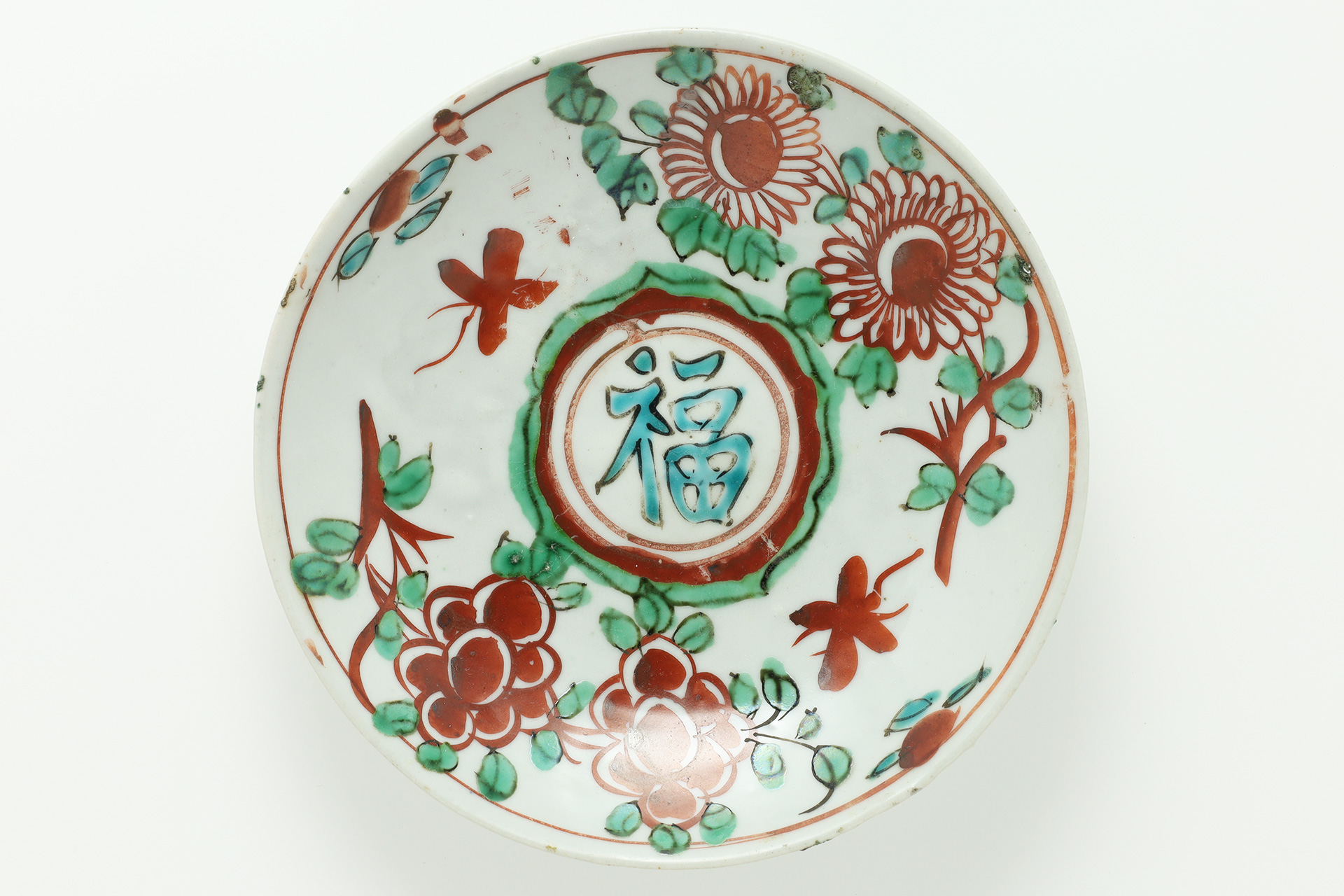
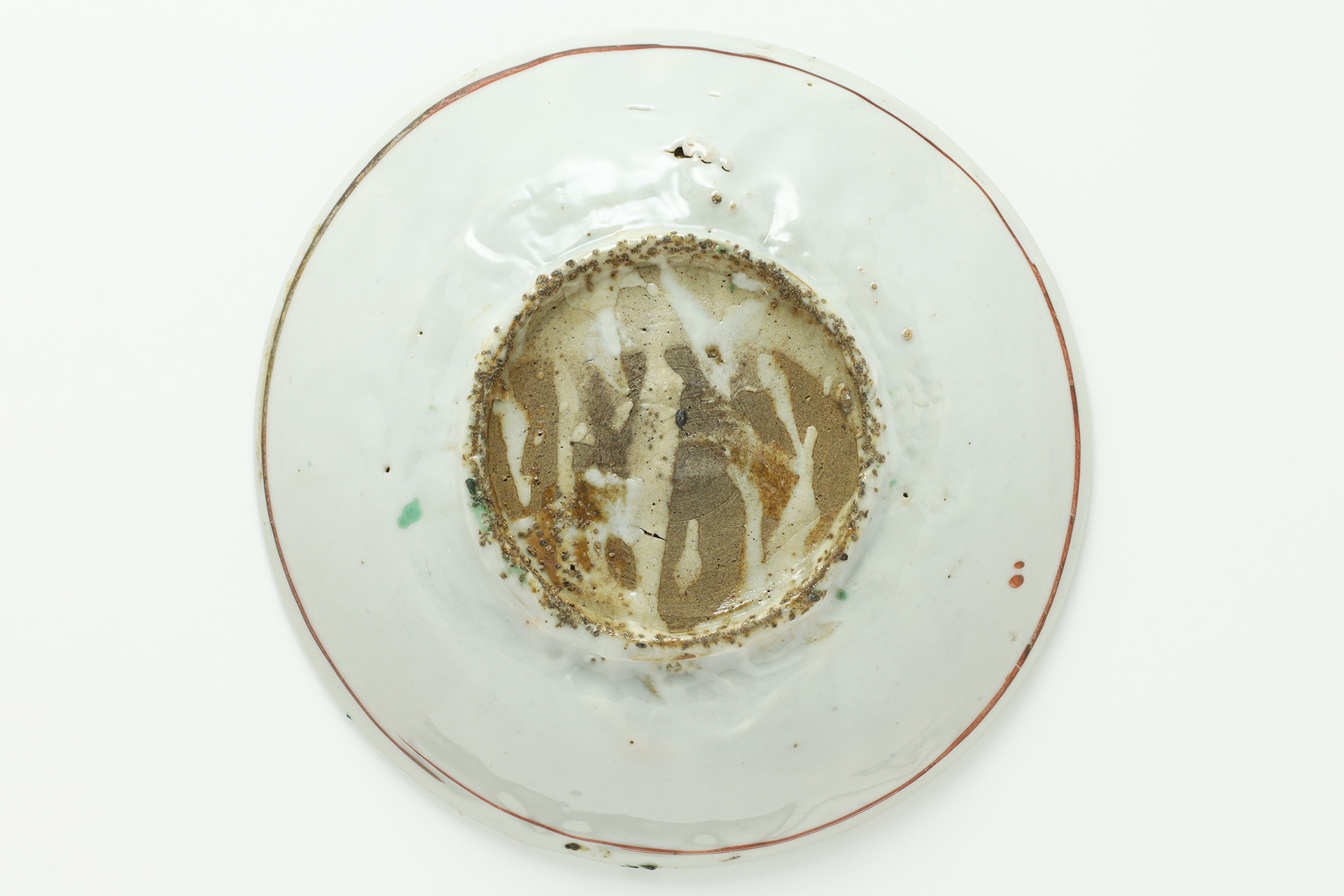
Gosu-de
Gosu-de refers to a category of coarse ceramics fired mainly during the late Ming dynasty at the Zhangzhou kilns in southern Fujian Province, China. These wares typically feature a rough clay body coated with white slip, and are known for their diverse decorative styles, including gosu aka-e (overglaze red painting), gosu sometsuke (underglaze blue), shiro gosu (white slip with minimal decoration), and mochibana-de (puffed floral motifs). These ceramics were widely exported throughout Southeast Asia and to Japan, primarily via the port of Shantou in Guangdong Province. As a result, they came to be known in the West as “Swatow ware.” The origin of the term “gosu” is uncertain. One theory suggests it derives from the name of the Song dynasty literatus Zhao Ziguo (趙子昴), reversed and used to refer to clumsy painting as “Gosu.” Another, more widely accepted theory holds that “gosu” refers broadly to the southern regions of China, which were vaguely called “Go” (呉) in Edo-period Japan. Thus, “Gosu-de” would mean “wares from the southern lands of China.”
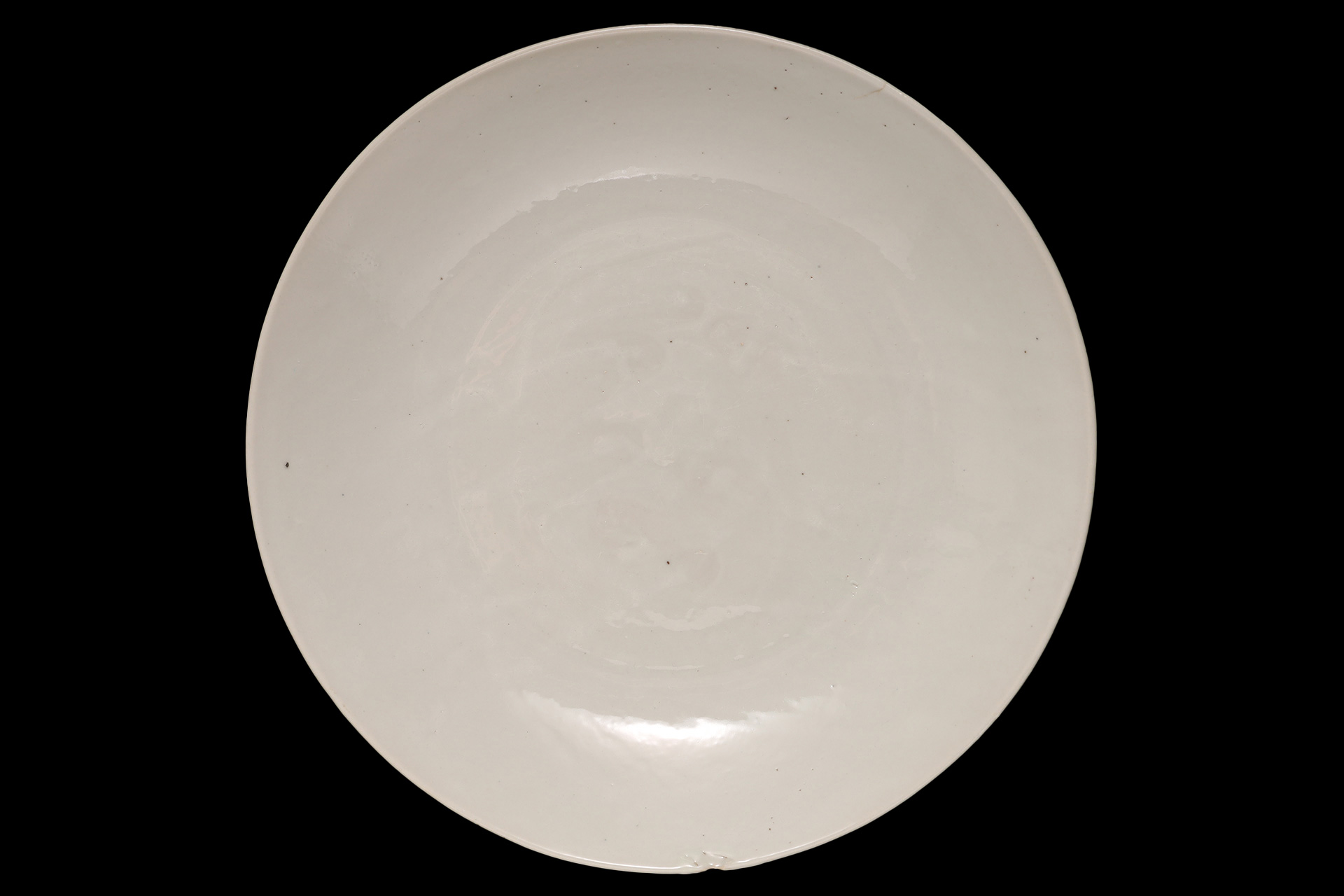
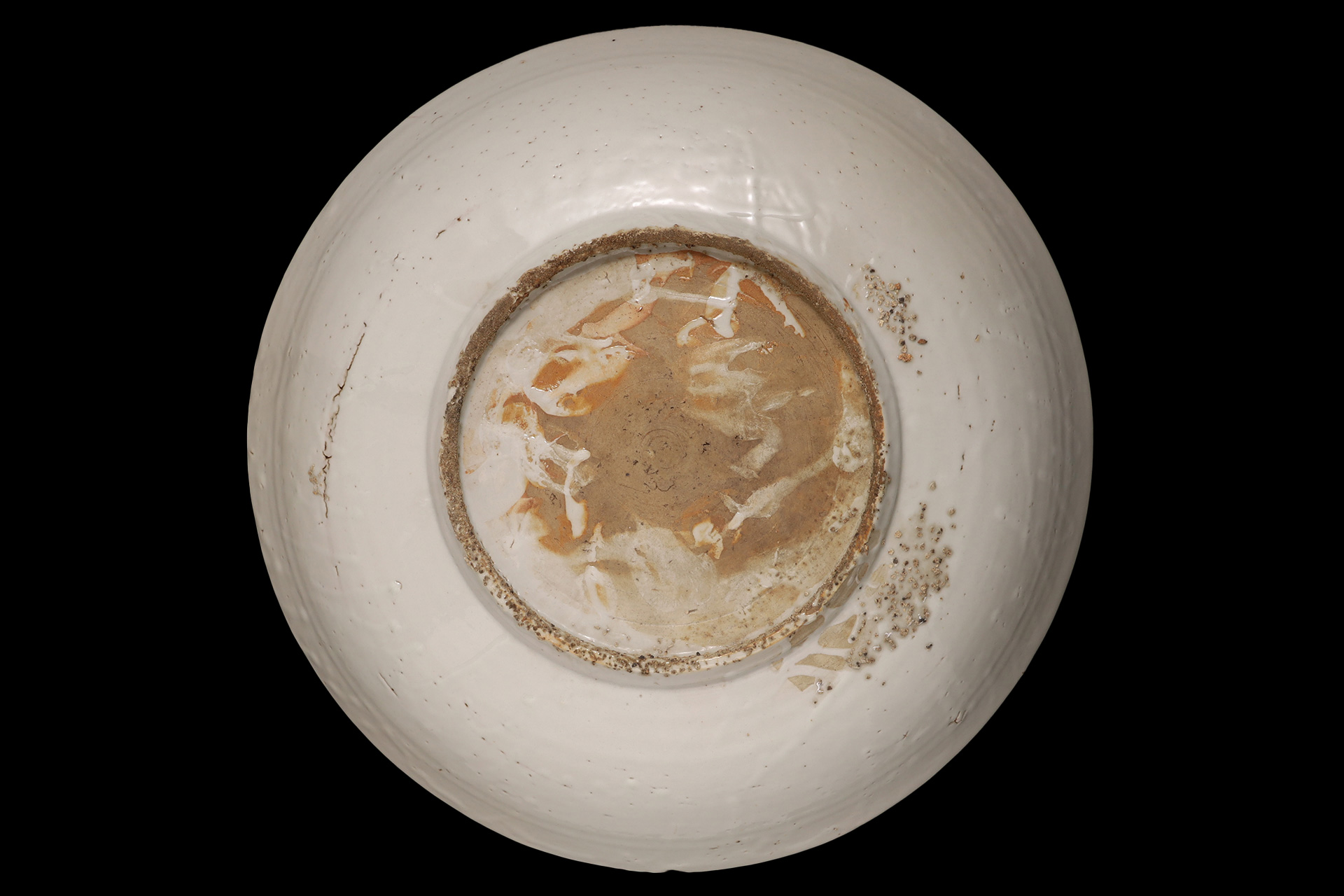
We sell and purchase Chinese Antique(Ming・Qing Dynasty)
We have a physical shop in Hakata-ku, Fukuoka City, where we sell and purchase "Chinese Antique(Ming・Qing Dynasty)" works. Drawing on a long career and rich experience in dealing, we promise to provide the finest service in the best interests of our customers. With the main goal of pleasing our customers, we will serve you with the utmost sincerity and responsibility until we close the deal.
